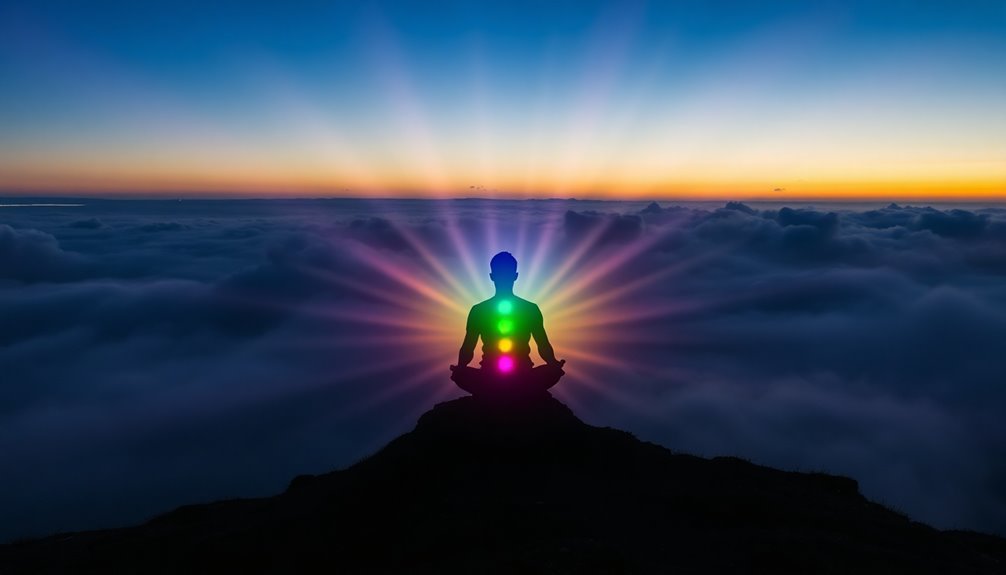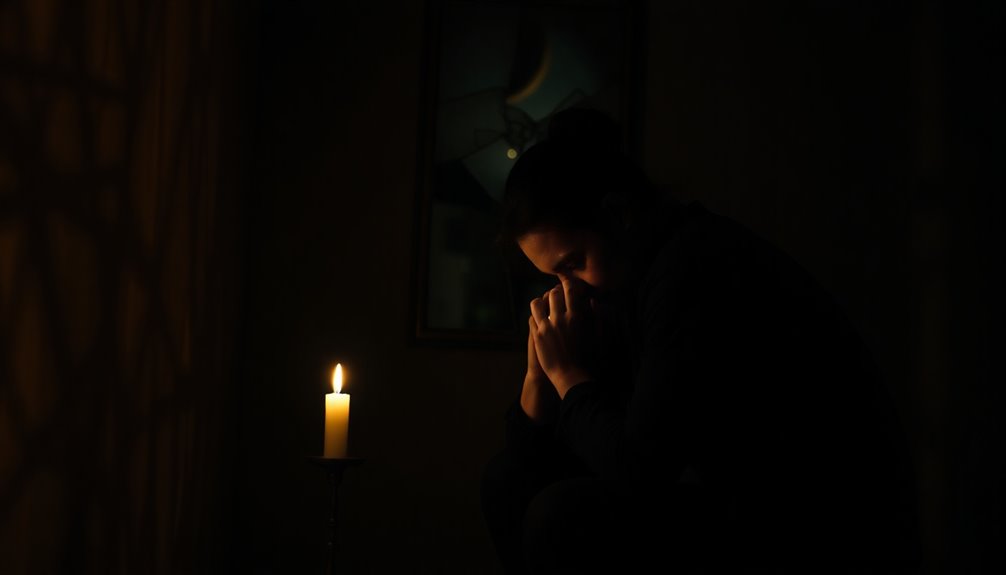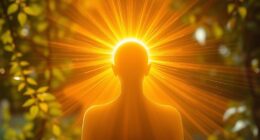Chakras are real energy centers rooted in ancient Tantric traditions, essential for your physical, emotional, and spiritual well-being. While the popular concept of seven chakras is a simplification influenced by Western interpretations, these energy centers genuinely affect various life aspects. Imbalances can lead to physical and emotional issues, making understanding chakras important. However, misconceptions abound, particularly regarding color associations and emotional connections. To truly grasp their significance and navigate potential risks, it's imperative to reflect on original teachings. Curious about how to safely explore chakras and enhance your well-being? There's plenty more to uncover about this fascinating topic.
Key Takeaways
- Chakras originate from ancient Tantric texts, but many interpretations have been distorted over time, particularly in Western culture.
- The concept of chakras as energy centers is linked to physical and emotional well-being, though their historical context is often misunderstood.
- Misconceptions about chakras, such as fixed color associations and emotional connections, stem from New Age adaptations rather than traditional teachings.
- Engaging with authentic Tantrik sources can provide a more accurate understanding of chakras and their functions.
- Mindfulness practices can enhance chakra work, promoting balance and grounding while minimizing risks associated with rapid energy shifts.
Historical Origins of Chakras
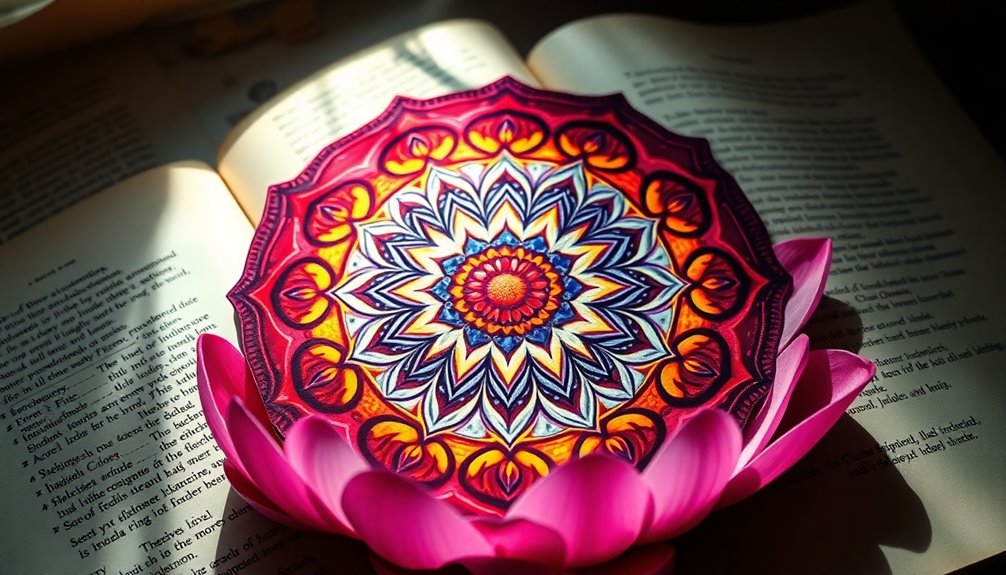
Chakras have their roots in Classical Tantra, a lineage of yoga that emerged between the 5th and 12th centuries ACE. This period marks their historical significance in spiritual practices that focus on the subtle energy body.
Ancient yogis were the first to perceive chakras as essential energy centers, and they documented their insights in thousands of ancient texts. Unfortunately, many of these texts have been lost, leaving us with only fragments of their wisdom.
Different Tantric schools recognized varying numbers of chakras, ranging from five to sixteen, illustrating the mutable nature of chakra systems throughout history. The concept of seven fixed chakras, which is widely accepted in contemporary Western practices, draws largely from Arthur Avalon's mistranslation of certain Sanskrit texts. This deviation from original Tantric principles can obscure the true essence of chakras.
The term "chakra," meaning "spinning wheel of light" in Sanskrit, emphasizes their dynamic role as energy centers that impact your emotional and physical well-being.
Understanding these historical origins not only enriches your practice but also connects you to a profound lineage of spiritual exploration.
Misinterpretations and Mistranslations

Misinterpretations and mistranslations have greatly altered the understanding of chakras in the Western world. Authors like Arthur Avalon have popularized concepts that stray far from original Tantrik traditions. His book, "The Serpent Power," has markedly influenced New Age thinkers, leading to widespread misconceptions about the nature and function of chakras.
This lack of access to thorough resources on ancient Tantrik texts has contributed to a fabrication of ideas that don't reflect the historical significance of these energy systems.
In many contemporary teachings, you might notice an oversimplification or misrepresentation of chakra principles, stripping them of their rich cultural and philosophical depth. A prime example is the notion that there are seven fixed chakras. This idea is a Western construct, while various Tantric schools historically recognized differing numbers of chakras.
These variations highlight the mutable nature of energy systems, which reflects the complexity of the original traditions. By understanding these misinterpretations and mistranslations, you can gain a clearer perspective and appreciate the depth of chakras beyond the simplified versions often presented today.
The Seven Chakra Myth
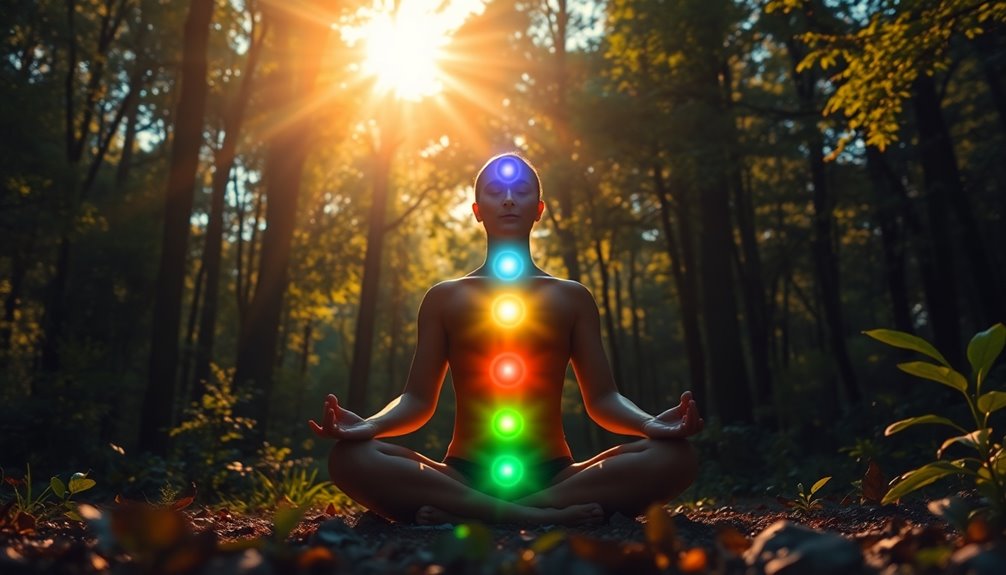
The idea that there are exactly seven fixed chakras is a common misconception largely rooted in Western interpretations rather than authentic Tantrik teachings. In reality, different traditions recognize varying numbers of chakras—some acknowledge five, nine, or even sixteen. This diversity reflects the fluid philosophy around energy and its manifestations.
The prominence of the seven chakras in Western culture largely stems from Arthur Avalon's mistranslation and oversimplification of ancient texts in the early 20th century. In contrast, Classical Tantrik traditions viewed chakras as mutable, with practices differing considerably based on lineage and focus. This fluidity contradicts the rigid framework of seven chakras that many accept today.
Additionally, the Sanskrit names for chakras lack standardization, further emphasizing the diversity in chakra systems. By reducing these complex teachings to a fixed model, we overlook the rich historical context embedded in ancient practices.
Understanding the true nature of chakras requires acknowledging this complexity, which ultimately leads to a more nuanced view of energy and its role in our lives. So, the next time you hear about the seven chakras, remember there's much more to the story.
Color Associations Explained

Color associations in modern chakra practices can be quite misleading. You might find it common to see red linked with the Root Chakra or green with the Heart Chakra, but these connections primarily stem from New Age interpretations.
Traditional texts, particularly Tantrik scriptures, mainly reference red and gold as chakra colors, not the rigid rainbow scheme you often encounter today.
In modern practices, emotional associations are frequently assigned to chakras—like blue for the Throat Chakra, symbolizing communication, or orange for the Sacral Chakra, which is tied to creativity.
However, these links don't have roots in historical texts. In fact, ancient Tantrik literature doesn't explicitly connect chakras with specific emotional states, highlighting a significant departure from contemporary beliefs.
Anatomy and Function of Chakras
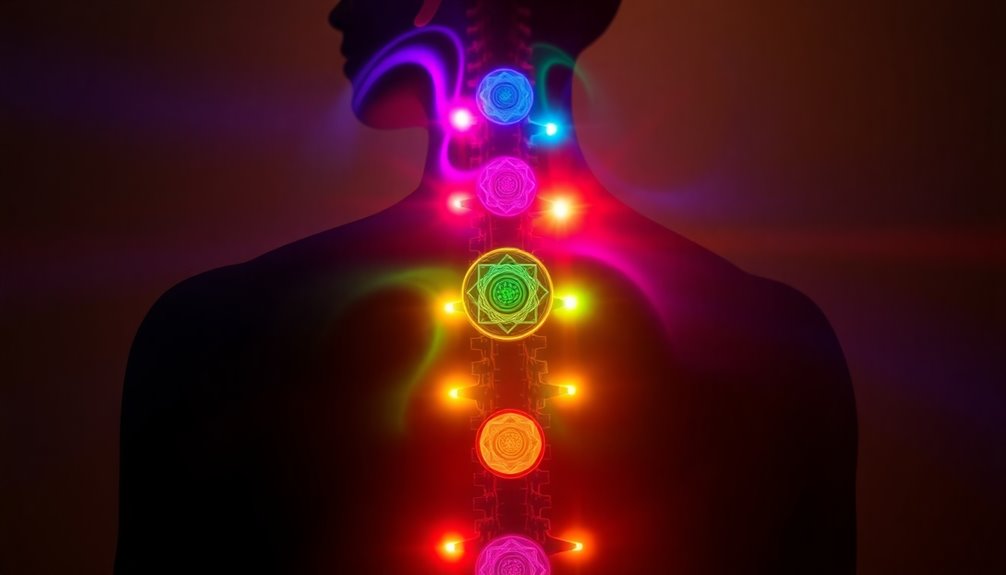
Chakras are your body's energy centers, each linked to specific organs and emotional states.
Understanding how these energy centers interact with your physical body is key to enhancing your overall well-being.
Energy Centers Explained
Situated along the spine, energy centers known as chakras play an essential role in your physical, emotional, and spiritual well-being. The chakra system, which first began to gain recognition in ancient traditions, consists of various energy centers that correspond to specific functions in your body.
Each chakra influences crucial life aspects, from intuition to emotional balance. For example, the Third Eye chakra connects to the pineal gland, impacting your intuition and perception. These energy centers interact with your body's electromagnetic field, serving as intelligent hubs for coordinating subtle energy flow.
Different traditions acknowledge varying numbers of chakras, with some identifying five, nine, or even sixteen distinct energy centers. This diversity reflects the dynamic nature of the chakra system, as its understanding evolves through historical practices and cultural exchanges.
Chakra Interaction With Body
Understanding how these energy centers interact with your body reveals their profound impact on both physical health and emotional stability.
Chakras are dynamic organs within your electromagnetic body, influencing various aspects of life. Each chakra corresponds to specific organs and glands, creating pathways for energy flow that affect your overall well-being.
Consider the following interactions:
- Root Chakra: Governs grounding and stability, linking you to reality.
- Heart Chakra: Facilitates emotional processing and love, fostering connections with others.
- Third Eye Chakra: Sits in the center of your forehead, enhancing intuition and perception, vital for a spiritual experience.
- Solar Plexus Chakra: Influences confidence and personal power, affecting how you assert yourself in the world.
- Throat Chakra: Governs communication, helping you express thoughts and feelings clearly.
Imbalances or blockages in these chakras can result in physical symptoms, emphasizing the importance of maintaining their health.
Healing Practices and Bija Mantras
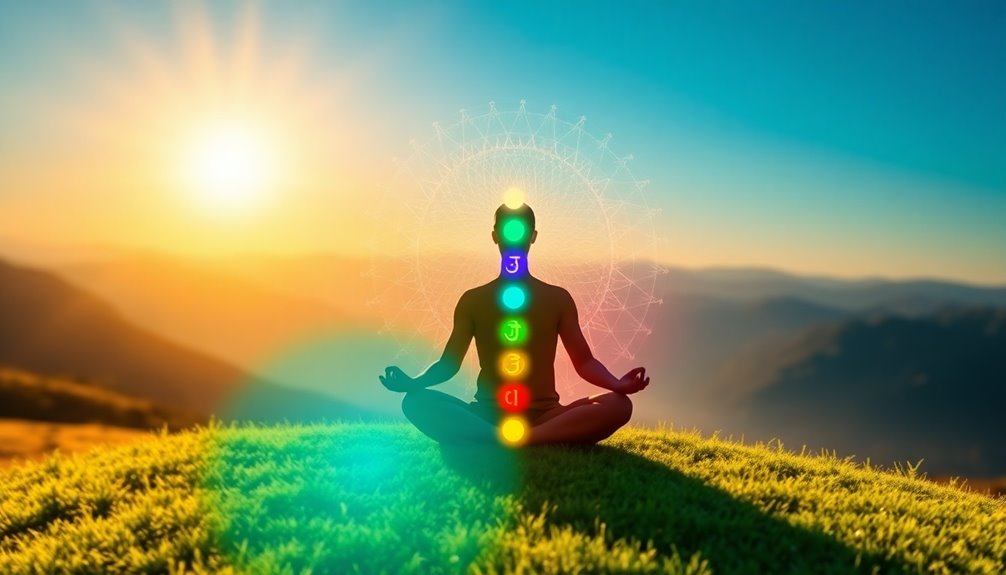
Exploring healing practices often leads you to the intriguing world of bija mantras, which are seed sounds rooted in ancient Tantrik traditions. These mantras connect to the five elements rather than directly correlating with specific chakras, as many modern interpretations suggest. Understanding this distinction is critical; traditional guidance emphasizes that the correct bija mantras aren't typically accessible without proper initiation.
In ancient practices, chakra work wasn't about relying on external healers. Instead, practitioners engaged in daily Sadhana—personal spiritual practices—that included breath control, visualization, and repetitive mantra chanting. These methods promote energy alignment and spiritual growth, allowing you to explore your inner landscape deeply.
While contemporary claims about chakra healing can be enticing, they often lack grounding in the foundational texts of Tantrik tradition. The focus should remain on the practices that were historically significant, rather than misconceptions that link bija mantras directly to chakras.
Risks and Cautionary Practices
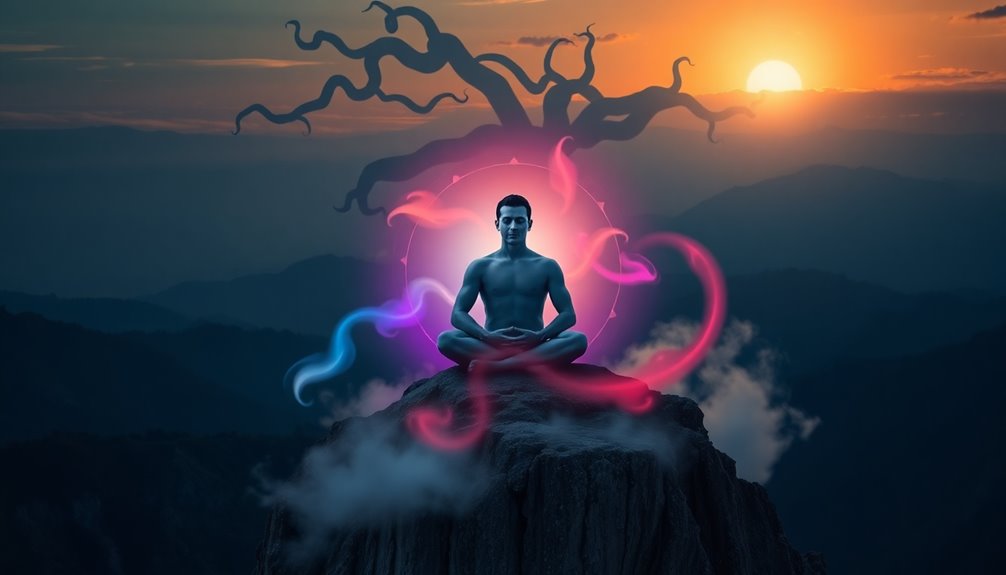
Engaging in chakra work can be a transformative journey, but it comes with inherent risks that you shouldn't overlook.
While exploring your chakras, it's vital to incorporate cautionary practices to guarantee a safe experience. Here are some key considerations:
- Emotional Overwhelm: Rapid unblocking can lead to overwhelming feelings, making it hard to cope.
- Physical Distress: Quick energy releases may cause discomfort or even pain.
- Self-Awareness: You'll need heightened self-awareness to distinguish your energy from external influences.
- Negative Energies: Be wary of attracting negative energies or spirits during your practices.
- Seek Guidance: Finding a mentor or experienced practitioner can provide essential support and clarity.
Additionally, practicing mindfulness techniques, such as nighttime meditation, can help ground your energy and promote emotional stability during your chakra exploration.
Future of Chakra Understanding
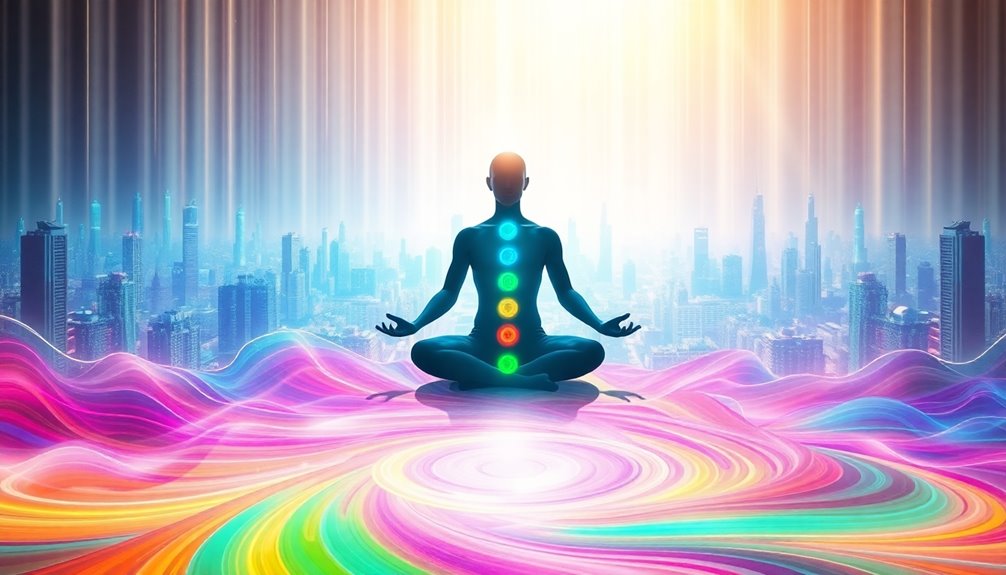
The future of chakra understanding holds the promise of a richer and more nuanced perspective, one that embraces the myriad interpretations and practices found across cultures. As you explore this evolving landscape, you'll find that a cross-cultural approach is essential. Acknowledging diverse practices fosters inclusivity and deepens your understanding of chakras.
Ongoing scholarly research plays a crucial role in this journey. By delving into ancient texts and uncovering historical truths, you can gain a deeper, more authentic grasp of chakra systems.
Community engagement is equally important. Participating in workshops can enhance your awareness and help counteract misconceptions that often surround chakra practices.
A program like The Light Collective Method offers extensive training for yoga teachers, ensuring they accurately represent chakra systems while returning to original Tantrik teachings.
This collective evolution in chakra awareness will likely emerge as personal experiences and insights from diverse practitioners shape the future of these teachings. By actively participating in this community, you contribute to a richer understanding of chakras, paving the way for a more informed and holistic approach to this ancient wisdom.
Frequently Asked Questions
Is Chakra Scientifically Proven?
Chakras aren't scientifically proven in the way you might expect.
While some studies show that practices like meditation related to chakras can improve emotional well-being and reduce stress, the scientific community often views these findings skeptically due to a lack of rigorous clinical trials.
The electromagnetic field around you has measurable effects, but direct links to chakras remain anecdotal and subjective.
What Does Jesus Say About Chakras?
You might think of Jesus' teachings like a river, flowing with love and compassion, guiding you toward spiritual enlightenment.
While he doesn't directly mention chakras, you can find parallels in his emphasis on the heart as the center of emotional and spiritual life.
The heart chakra embodies his messages of love for others and God.
Integrating these concepts could deepen your understanding of spiritual growth and connection with the divine.
Is the Concept of Chakra Real?
The concept of chakra is deeply rooted in ancient traditions, where it represents energy centers influencing your physical and emotional well-being.
While you might encounter various interpretations, the essence remains that these centers can affect your overall health.
Understanding chakras can enhance your awareness of energy flow within you.
Which Chakra Is Associated With Truth?
You might think honesty is just a virtue, but it's actually tied to the Throat Chakra, or Vishuddha.
This chakra, located at the base of your throat, influences your ability to express your true self. When it's balanced, you communicate clearly and authentically.
However, if it's blocked, you could struggle to convey your thoughts, leading to frustration.
Conclusion
Just like a garden needs nurturing to bloom, your understanding of chakras can flourish with care and knowledge. While some see them as mere myths, others find profound meaning in their practice. As you tend to this garden of ideas, remember that wisdom often grows in the spaces where belief meets skepticism. Embrace the journey, and let your personal exploration be the sunlight that helps your understanding thrive, whether you see chakras as real or symbolic.
